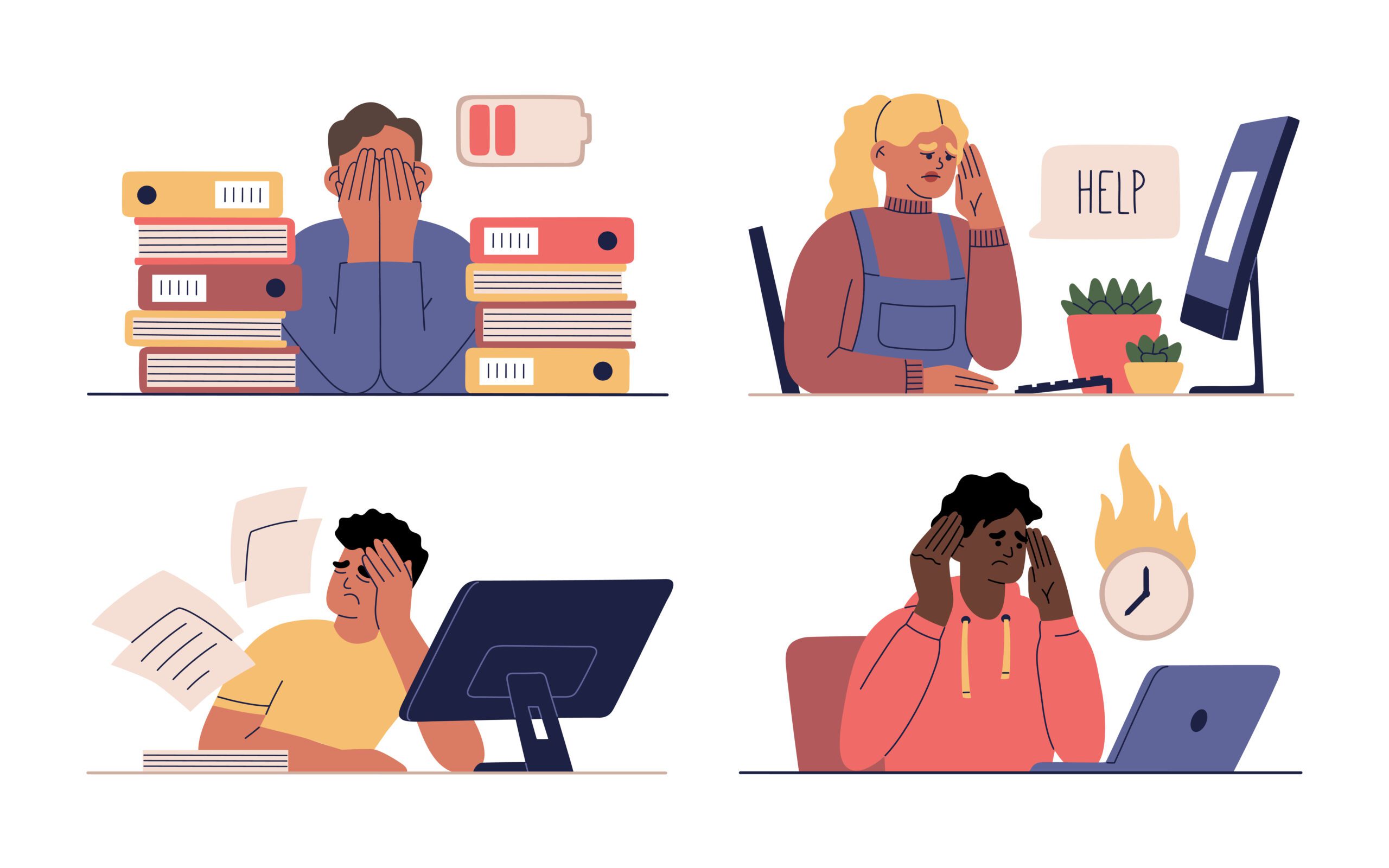Over the past two years, we’ve learned remote/hybrid work can be wildly successful; however, as The Great Resignation shows us, misaligned leadership and inadequate resources can put an organization’s talent at great risk.
The ActivTrak Productivity Lab 2022 State of the Workplace report recently uncovered new findings about employee burnout, productivity, flexibility, collaboration and focus. These insights offer clear guidance for leaders and managers on how to help employees sustain healthy levels of productivity in the new era of remote and hybrid work. Below are the top four workforce talent considerations for healthy productivity.
1. To address burnout in the workplace, develop a mechanism for early warning signs.
Burnout, fatigue and stress are top of mind concerns for business leaders across all industries, and rightfully so. According to the report, one-third of employees still face burnout risk. While the data tells a daunting story, there are clear ways leaders can get ahead of these statistics. To do so, they must move beyond reactive metrics and focus on proactive warning signs.
By using workforce productivity data, leaders and managers can spot workload imbalances if they see employees working in the evenings and weekends. They can provide immediate coaching and mitigation strategies, whether that means shifting workload across the team, providing additional training or modifying headcount. Managers can also spot common distractions from too many messaging applications, meeting tools, etc. and develop operating norms to help employees keep from being overwhelmed with collaboration expectations.
If leaders want to get ahead of burnout, they can’t simply look back at exit interview data to know burnout is a problem in their workplace. A shift to proactive indicators on an ongoing basis is essential, as burnout can take weeks to surface in some cases and in others, take hold of an employee overnight.
2. Flexibility can be achieved, but only when clear expectations and social norms are in place.
While employees and employers search for more permanent flexibility options that satisfy both business and employee needs, clear expectations and social norms are essential for long-term, sustainable modifications to any workplace policy.
ActivTrak’s data reveals that from 2020 to 2021, employees increased their productivity efficiency by 40 percent. This means many employers and employees have cracked the code on remote work, establishing productive norms and expectations while providing the right technology solutions to enable hybrid and remote work circumstances.
According to our research, clear expectations and norms come in many forms; ranging from core working hours, established focus hours and start time expectations, to name a few. While these practices are often unique to company cultures and operations, the boundaries help inform productive behaviors in the workplace.
Leaders are encouraged to be clear in their expectations across their workforce—both in the outcomes they expect employees to achieve and in the hours and working habits they embrace to achieve them.
3. Additional coaching tips and resources are critical to developing optimal productivity habits.
While flexibility for employees has many benefits, such as higher levels of engagement, increased trust and improved retention, it also has its challenges.
Flexibility to develop one’s own work schedule lends itself to experimentation, unexpected challenges and misalignment across team preferences. It’s important leaders and managers with a broader organizational perspective guide employees in assessing the right flexibility and productivity habits that work for them.
According to Productivity Lab research, routines yield one additional hour of productivity per day, and employees with consistent start times are more productive than their peers. Findings such as these allow managers to coach employees into establishing habits that could make their work easier to achieve.
Providing employees with personal productivity insights allows them to understand when they’re most productive, focused or collaborative throughout the day. For example, understanding break time habits — if they are taking enough and if they need more time away from the screen — can help them optimize and manage their energy levels. At the same time, it’s helpful to shed light on team-wide insights so personal work preferences can be balanced alongside team-wide collaboration needs.
Leaders must take responsibility for providing support and guidance alongside the flexibility choices they offer their employees.
4. Collaboration tools stand to elevate productivity and hinder it; teams must clearly align on their intended usage.
Now that virtual collaboration has become essential to daily work, it’s important to understand how it can elevate productivity and hinder it.
ActivTrak’s research reveals deep work is hard to come by. Only 3 percent of employees have focus sessions that last longer than 50 minutes, with 70 percent of employees averaging closer to 14 minutes. In analyzing disruptions, we learned collaboration tools are the No. 1 source of distractions. While equipping our workforce with an abundance of collaboration tools to fit synchronous and asynchronous communication styles, we must be mindful about the guidance and social norms that accompany them.
Managers can tackle this challenge by setting goals around collaboration time throughout the week and encouraging employees to be mindful about the amount of time they spend in meetings and messaging applications. Norms such as setting calendar blocks for focus time (a welcomed new feature in Google Workspace) can also help establish expectations around time that employees should not be disrupted. While brainstorming, problem-solving and culture-building all rely on virtual collaboration forums, ensuring these activities don’t become depleting activities that ultimately lead to employee fatigue is critical.
Looking ahead
With talent more distributed than ever, organizations must devise continuous feedback loops to ensure they’re keeping burnout, fatigue and stress at bay. Establishing proactive indicators, rather than reactive, will be key to shift from solving the existing problem to proactively avoiding one in the future.












